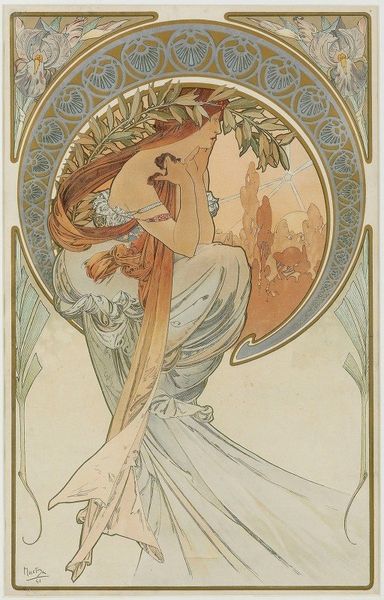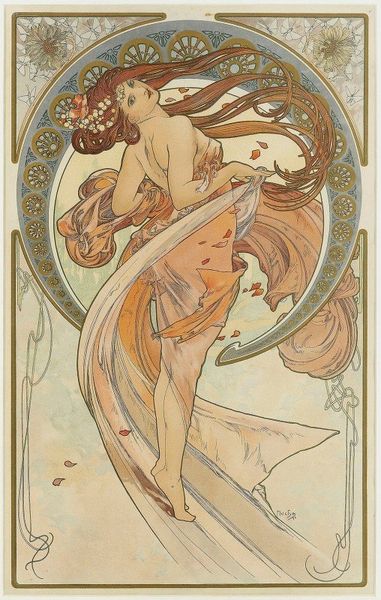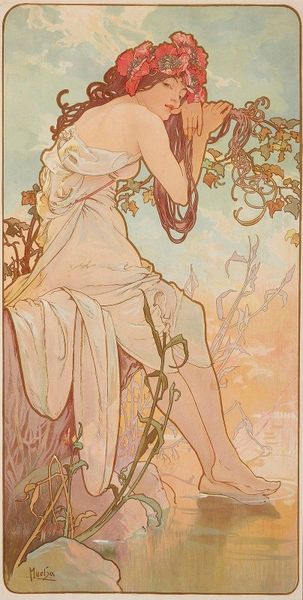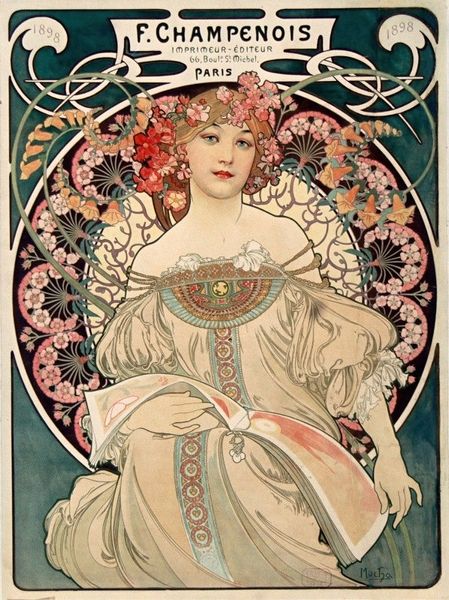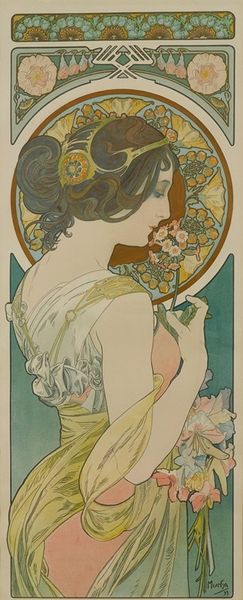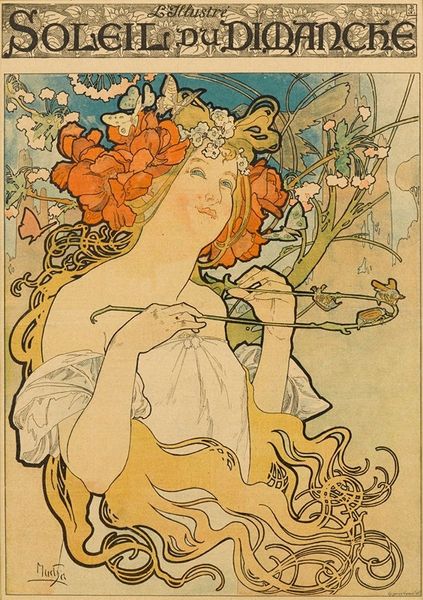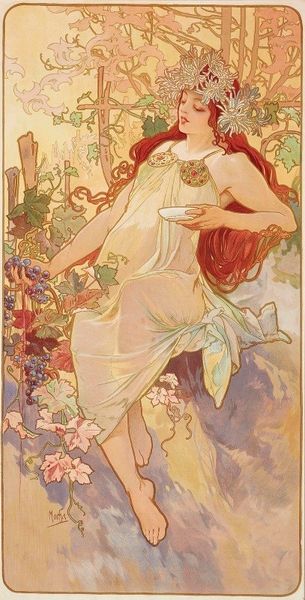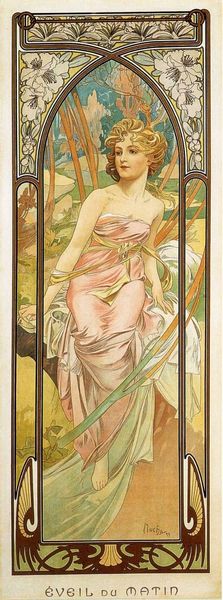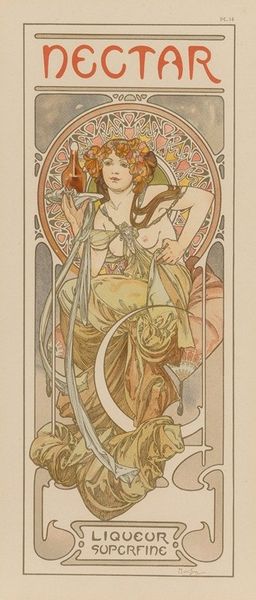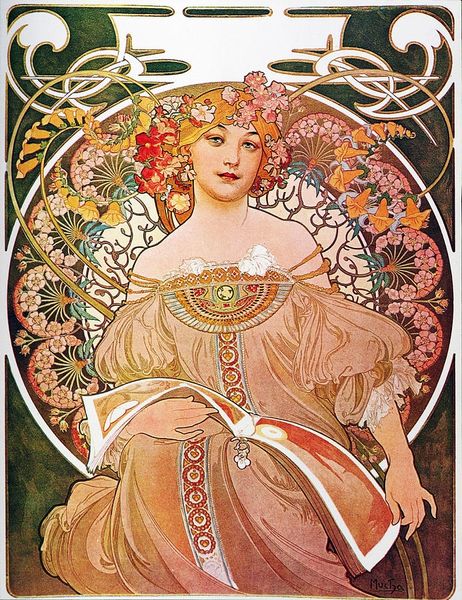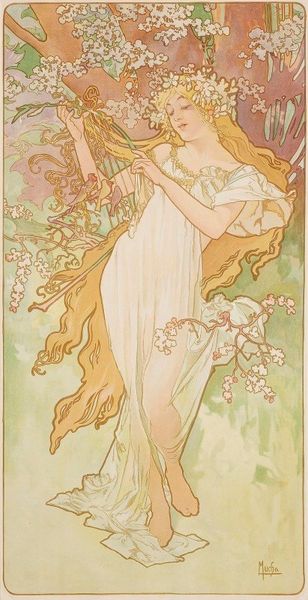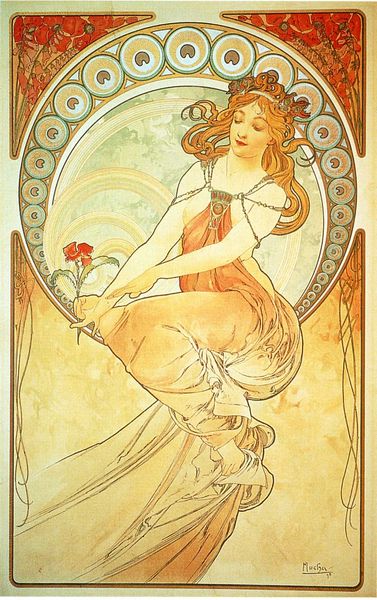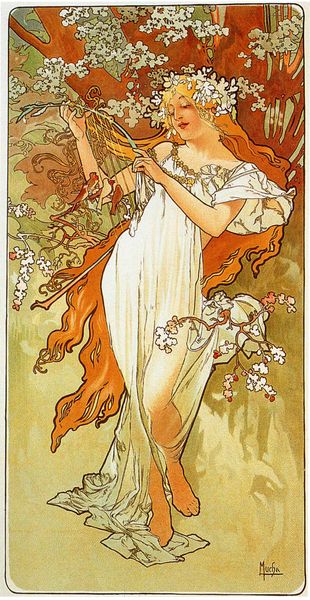
drawing, print, poster
#
portrait
#
drawing
#
art-nouveau
# print
#
figuration
#
coloured pencil
#
symbolism
#
decorative-art
#
poster
Copyright: Public Domain: Artvee
Curator: Looking at Alphonse Mucha's "The Arts 1" from 1898, I’m immediately struck by its ethereal quality and delicate composition. Editor: Indeed, there's an unmistakable moodiness about this work, created, as it was, in lithograph and ink, with the soft lines and muted palette. How did Mucha’s printing choices influence reception to his other graphic work? Curator: Well, in fin-de-siècle Europe, a flourishing commercial poster industry was a kind of Wild West. By embracing inexpensive materials like lithographic stone and by designing for mass production, Mucha managed to democratize artistic imagery and embed himself into everyday culture. Editor: Certainly, this poster embodies the aesthetic tenets of Art Nouveau. The elongated figure, curvilinear forms, and ornamental details of stylized natural elements, all these formal choices speak to a world shifting into the 20th century, and seeking fresh answers to time-honored riddles of representation. Curator: Beyond the figure's languid pose, notice the significance of those irises entwined around her, likely achieved with colored pencils or lithographic crayons, which may symbolize faith, hope, wisdom, and valor. This blend of graceful figure with rich botanic ornament speaks to the social function of art in a transitional world. Editor: I am intrigued by the tension between idealized form and decorative stylization, where her gesture introduces narrative possibility. She seems almost caught off guard. Do you think Mucha intended to invite us into this world, to evoke introspection and a sense of human emotion, rather than objective observation? Curator: Exactly, and I see Mucha responding directly to anxieties during a period of immense technological transformation and global artistic dialogue by emphasizing the importance of handcraft in commercial culture and elevating modes typically seen as low art, like advertisements and posters, and thereby elevating the working-class laborers that helped produce them. Editor: An interesting view to consider. Through form and subject matter, “The Arts 1” presents the public not just an image, but an invitation into a space that challenges the gaze, evokes a certain kind of feeling, and questions our relationship to time and artmaking itself.
Comments
No comments
Be the first to comment and join the conversation on the ultimate creative platform.
